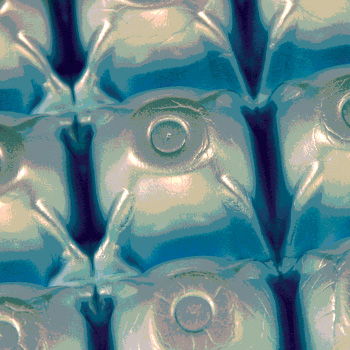FDA’s Food Contact Substance Notification Program

Among the responsibilities of the U.S. Food and Drug Administration (FDA) is regulation of components of food contact materials, including packaging. Once known as indirect food additives, FDA now refers to these materials as food contact substances (FCS). In an effort to ensure the safe use of these substances, FDA has established a Food Contact Notification Program within the Center for Food Safety and Applied Nutrition’s (CFSAN) Office of Food Additive Safety. This article describes how to submit an FCS notification to FDA and how the food contact notification review process works. It also addresses the importance of participating in prenotification consultations, the role of threshold of regulation exemptions, and confidentiality concerns.
Definitions, History, and Scope
Definitions. Section 201(s) of the Federal Food, Drug, and Cosmetic Act (FD&C Act) defines a “food additive” as any substance the intended use of which results or may reasonably be expected to result, directly or indirectly, in its becoming a component or otherwise affecting the characteristic of any food (including any substance intended for use in producing, manufacturing, packing, processing, preparing, treating, packaging, transporting, or holding food; and including any source of radiation intended for any such use); if such substance is not generally recognized as safe (GRAS) or sanctioned prior to 1958.[1] Section 409 of the statute defines an FCS as any substance that is intended for use as a component of materials used in manufacturing, packing, packaging, transporting, or holding food if such use of the substance is not intended to have any technical effect in such food. Common types of food contact substances include coatings, plastics, paper, adhesives, as well as colorants, antimicrobials, and antioxidants found in packaging.
History. In 1958 the FD&C Act was amended by adding Section 409, which requires FDA to approve new food additives before they can be used in foods. To meet this requirement FDA established a process by which an individual can petition FDA requesting approval of a food additive. All food contact substances that were additives required approval. In 1997, the Food and Drug Administration Modernization Act (FDAMA) amended Section 409 of the FD&C Act establishing a food contact notification process that allows for faster review of FCSs that are food additives. The amendment did not alter the safety standard applied to all food additives and notification for an FCS must contain sufficient scientific information demonstrating that the substance that is the subject of the notification is safe for the intended use.[2] FDA’s fiscal year 2000 budget contained an appropriation to fund the FCN program and in October 1999 the Office of Food Additive Safety began converting approximately 120 in-house food additive petitions and threshold of regulation submissions for review under the new amended requirements.[3] On Jan. 18, 2000, the Agency began accepting new food contact notifications, and in July 2000 FDA published proposed regulations for the program. The regulations were finalized in May 2002 and codified in 21 CFR Part 170.100-106.
Scope. Food contact notifications are required only for new uses of FCSs that are food additives. Although a notification is not required for a food contact substance that is GRAS or prior sanctioned for its intended use in contact with food, some companies do choose to notify the Agency in order to clarify the regulatory status of such substances. Manufacturers may also use FCNs to notify FDA of new uses of FCSs that are GRAS or prior sanctioned.
Unlike food additive regulations and threshold of regulation exemptions, approvals under the FCN process are proprietary. This is because Section 409(h)(1)(C) of the FD&C Act states that an FCN is effective only for the manufacturer and substance identified in the notification. Thus, any person wishing to rely on an FCN needs to demonstrate that the FCS being marketed has been manufactured or supplied by the manufacturer identified in the FCN and is being used under the conditions that are the subject of the FCN. This may seem a trivial point but it is important since the manufacturer for which the FCN is effective does not need to be the actual manufacturer of the FCS but can also be a supplier who is purchasing the substance and distributing it for the intended use. If a notifier is not careful in defining the entities for which the FCN is effective, the proprietary approval received in a successful FCN may not be applied to the intended company.
The Notification Process
Anyone may submit a food contact notification to FDA. (Although the FD&C Act refers to manufacturers or suppliers submitting a notification, FDA interprets the term supplier broadly to include persons who could previously have requested authorization under the food additive petition process. This ensures that no one was unfairly excluded by the transition to the FCN process.) The FCN process is initiated when a submission, prepared by the notifier, arrives at the Office of Food Additive Safety. A notification control assistant logs the submission and assigns it a notification number. The submission is then distributed to a review team for assignment. The review team consists of a consumer safety officer, a chemist, a toxicologist and an environmental scientist. During the initial month of the review period, FDA does not ordinarily contact the notifier; however, the notifier is free to contact the consumer safety officer in charge of its notification.
A “phase one” review meeting is held within the first three weeks after receipt of the FCN to ensure that the basic data and informational elements are present and that the submission meets the administrative requirements set forth in the FD&C Act and FDA’s regulations. If the submission is complete it is accepted and FDA sends the notifier an acknowledgment letter. The acknowledgment letter initiates formal communication between FDA and the notifier and gives the notifier an opportunity to comment on the Agency’s understanding of the identity and intended use of the food contact substance that is the subject of the notification. Notifiers who disagree with FDA’s description of the FCS should respond as quickly as possible to this acknowledgment letter. The acknowledgment letter also establishes the date of receipt of the notification, which indicates when the 120-day FCN review period began, and that the review team is entering into “phase two” review.
During “phase two” the team evaluates the safety of the food contact substance as it is proposed for use. If there are no concerns during “phase two” review, the FCN automatically becomes effective on the 120-day date and the consumer safety officer sends a letter to the notifier confirming the effective date. Information about the notification is then added to the Inventory of Effective Premarket Notifications for Food Contact Substances posted on CFSAN’s web page.[4]
If after “phase one” review the notification is deemed “not acceptable” and FDA must request additional information, the date of receipt of the additional information may be considered the date of receipt of the complete notification and the 120-day review period would begin on that date. This determination is based on the nature of the additional information received; i.e., whether it is substantive or non-substantive in nature. Since the time for review of FCNs are short, requests for and receipt of additional information must be handled in a timely manner as one of several scenarios may play out this point. If the requested information is not received within approximately two weeks and the notifier does not withdraw the submission, FDA may deem the notification incomplete and a non-acceptance letter may be issued to the notifier indicating termination of FDA’s review. If FDA does receive the additional information within two weeks but still deems the notification to be incomplete the notifier may be given the option of withdrawing the submission without prejudice before receiving a non-acceptance letter. (About one in four FCNs is withdrawn because of deficiencies.) If the information adequately completes the submission it is accepted, an acknowledgment letter is sent, and “phase two” review begins. Provided that there are no safety concerns during “phase two” review, a final letter is sent to the notifier confirming the FCN effective date and the notification is added to the Inventory of Effective Premarket Notifications for Food Contact Substances posted on the Internet.
What happens if there are safety concerns during the “phase two” review? If safety concerns emerge, the notifier is given the option of withdrawing the submission without prejudice to a future submission. If the notifier does not withdraw the notification, an objection letter is sent to the notifier.
Under 21 CFR 170.100 (c) FDA may also issue a non-acceptance letter for the following: (1) food contact substance uses that increase the cumulative estimated daily intake (CEDI) of the food contact substance to a level equal to or greater than 3 milligrams per person per day for a substance that is not a biocide (e.g., it is intended to exert microbial toxicity); and 0.5 milligrams per person per day for a biocide; and/or (2) where a bioassay exists on the food contact substance, FDA has not reviewed the bioassay, and the bioassay is not clearly negative for carcinogenic effects.
Threshold of Regulation. Some FCNs are for uses that qualify for review under FDA’s “threshold of regulation” process. The threshold of regulation process is an abbreviated review process for uses of indirect food additives that result in exposures below 1.5 micrograms per person per day. The threshold of regulation process can result in a faster approval; however, that approval is not proprietary.[5]
Confidentiality. A common concern of many notifiers is the availability of information submitted in an FCN. The FD&C Act prohibits FDA from disclosing information in an FCN during the 120-day review period. In addition, FDA has issued regulations establishing that information in FCNs withdrawn before FDA issues an objection letter or before the FCN becomes effective will not be disclosed. FDA also considers information in an FCN that is “not accepted” to be confidential commercial information protected from disclosure.
Some notifiers seek to protect information by including it in a food additive master file. Such information is protected only if it is not used as the basis of an FDA safety decision or if it is not otherwise publicly available. In these scenarios the information in the food master file is treated as if it was in the FCN. In short, information in an FCN is protected from disclosure during review and if the FCN is withdrawn or if a non-acceptance letter is issued, but is not protected from disclosure after an FCN becomes effective or if FDA objects to the FCN, unless it is trade secret or confidential information.
Increasing the Odds of Success
FDA encourages notifiers to participate in a prenotification consultation to facilitate the development of a complete FCN submission. Prenotification consultations are interactions between the Office of Food Additive Safety and industry prior to submission of an FCN, a food additive petition, or a threshold of regulation exemption request.[6] They are particularly advisable in situations where current guidance is not completely applicable. There are three circumstances in which FDA specifically recommends a prenotification consultation. The first specific circumstance is when the notifier believes that an FCN is not sufficient and a food additive petition is required for the use of an FCS. Such a meeting may be used to verify that a petition is required and that an appropriate level of information is supplied in the petition. The second specific circumstance for which FDA recommends a prenotification consultation is when different interpretations of available data would result in different conclusions, which in turn could affect whether it is appropriate to submit a notification or a petition.; e.g., if different interpretations of data in a bioassay could change the conclusion regarding the likely carcinogenicity of the substance. The third specific circumstance for which a prenotification consultation is recommended is when there are uncertainties about how specific data may be interpreted and those uncertainties are of such magnitude that they may affect the outcome of the overall safety determination; e.g., if the estimated daily intake is close enough to the acceptable daily intake that different choices for the no effect level may cause the resulting acceptable daily intake to be larger or smaller than the estimated daily intake. A prenotification consultation request may be sent via e-mail, facsimile, or letter and should be addressed to the notification control assistant.
Food Contact Substance Formulations
Occasionally, individuals may wish to verify compliance of the components of a particular food contact material. In such instances they may submit a notification for a food contact substance formulation. Such notifications are only meant to verify that components of a food contact material may legally be used and not to authorize a new food contact substance. Notifications for formulations do not require resubmission of the information supporting the safety of the intended use of each food contact substance in the formulation. A notifier for a formulation need only submit a completed FDA Form 3479 and any additional documentation required to establish that each of the components of the formulation is authorized for its intended use. In cases where the basis for compliance of an individual FCS in a formulation is an effective notification, a notifier of the formulation should establish that he can rely on the notification cited and that such notification is effective for the intended use in the formulation.
When checking compliance of components of a food contact material, remember that substances that are reasonably expected to migrate to food because of their intended use in contact with food should be one of the following: 1) approved indirect food additives used in compliance with 21 CFR Parts 174-179; 2) GRAS for use in or on contact with food; 3) substances whose use in contact with food is the subject of a prior sanction issued by FDA or USDA before 1958[7]; 4) used under a threshold of regulation exemption by FDA[8]; or 5) since October of 1999, the subject of an effective FCN. If the substance does not fall into one of these categories the FCN process or the threshold of regulation process are the preferred methods of providing for the safe use of the substance.
Individuals wishing to determine if FDA has a regulation for a specific food additive can view a list of food additives and their corresponding regulations at www.cfsan.fda.gov/~dms/opa-indt.html. The individual regulations for food additives and GRAS substances listed for use in the U.S. are located in Title 21 CFR Parts 182-186 and can be accessed through CFSAN’s web site. However, not all substances which are GRAS are listed in FDA’s regulations. FDA has instituted a procedure whereby companies may inform FDA of their own GRAS determination (GRAS notification procedure). A list of these GRAS notices, with FDA’s response letter to the notifier, can be found at www.cfsan.fda.gov/~rdb/opa-gras.html.
It is important to remember that the use of any chemicals to fabricate food contact articles is done with the understanding that it is the responsibility of the manufacturer to ensure that any resultant food contact articles comply with the specifications and limitations in all applicable regulations. When reviewing composite formulations to determine compliance, consider each regulation or notification to be composed of three parts: the identity of the substance; specifications, including purity or physical properties; and limitations on the conditions of use. In order for your products to be suitable for use in contact with food in the U.S., each chemical component must comply with all three criteria.
As of this article’s publication date, FDA has one remaining indirect food additive petition and continues to accept threshold of regulation exemption requests. Since January 2000, FDA has received over 500 FCNs and performed over 400 prenotification consultations. FDA encourages those who might file a FCN to familiarize themselves with the requirements spelled out in the CFR and in CFSAN’s guidance documents.
Anna P. Shanklin, Ph.D., is a chemist and a member of the Division of Food Contact Notifications in CFSAN’s Office of Food Additive Safety. She has worked for CFSAN for five years.
Elizabeth R. Sánchez, Ph.D., is a consumer safety officer and a member of the Division of Food Contact Notifications in CFSAN’s Office of Food Additive Safety. She has worked for CFSAN for two-and-a-half years.
Series editor Sebastian Cianci is a policy analyst and a member of CFSAN’s Office of Food Safety, Defense, and Outreach.
References
1. This is a shortened definition. The full definition, found in the FD&C Act provides for exclusions, as well.
2. Guidance for Submitting Petitions and Notifications. www.cfsan.fda.gov/~dms/opa-toc.html#info.
3. Threshold of regulation for substances used in food-contact articles can be found in 21 CFR 170.39.
4. Inventory of Effective Premarket Notifications for Food Contact Substances. www.cfsan.fda.gov/~dms/opa-fcn.html.
5. Submitting Requests Under 21 CFR 170.39 Threshold of Regulation For Substances Used in Food-Contact Articles. www.cfsan.fda.gov/~dms/torguid.html.
6. Pre-petition Consultations for Food Additives and Color Additives. www.cfsan.fda.gov/~dms/prepguid.html.
7. Prior Sanctioned Food Ingredients. www.access.gpo.gov/nara/cfr/waisidx_04/21cfr181_04.html.
8. Threshold of Regulation Exemptions. www.cfsan.fda.gov/~dms/opa-torx.html.
Looking for a reprint of this article?
From high-res PDFs to custom plaques, order your copy today!









